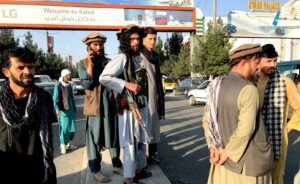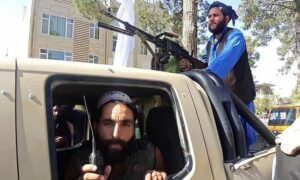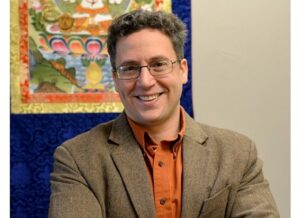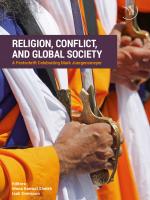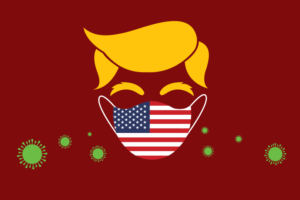
This is an abstract of the essay posted in the online journal, Global Perspectives at https://online.ucpress.edu/gp/article-abstract/2/1/24887/117619/Is-Religion-Dead?redirectedFrom=fulltext
[The full text follows this abstract]
The rise of strident movements of religious nationalism seems to signal a resurgence of religion. But such movements can also be read as the last gasp of religiosity as it succumbs to the inevitability of secular globalization.
Which is correct? Has religion revived, or is it in its death throes?
Part of the issue is statistical: adherence to religion seems to be on the rise in some parts of the world (Islam in Africa, for instance), though on the decline in others (Christianity in Europe and increasingly in the United States) and under attack in China.
But part of the issue is definitional: what is meant by religious
adherence—social identity or metaphysical belief? Scholarly attempts to define religion are various, though an interesting new definition is provided by the late sociologist Robert Bellah, who described religion as “alternative reality.” With that definition, one
can posit that religiosity is a fundamental part of the creative imagination, a constituent of culture as certain as art or music.
The question then becomes not whether religion will survive, but in what way it will survive. The popular religious choice of millennials,
“none,” may be consistent with the multicultural religiosity of the old Protestant liberals, a tradition now in decline. Liberal Protestants have not disappeared but have transformed into the bearers of a global morality and spiritual sensibility.
Hence we may be witnessing the emergence of new forms of spirituality and ethical community that resonate with the alternative reality of traditional religious experience but that have no name and no organization.
But these may become the global religion of the future.
Is Religion Dead?
Full text of the article published in Global Perspectives 2:1
Despite the dark predictions of religion’s future by such scholars as Karl Marx, Sigmund Freud, and Friedrich Nietsche, religion at the beginning of the 21st century seems strangely alive. I say “strangely” since the forms of religiosity that come to public notice are indeed strange. The right-wing Christian militia in the United States and the terrorism of the Islamic State are only two examples of the extreme forms of religious nationalism and violent cults that have vaulted into public attention.
There is more to religion’s revival than that, of course. In areas of Latin America where evangelical Protestantism is flourishing and in the vast swaths of Africa where Islam is on the rise, the devout are neither weird nor vicious and their religion seems to be an amicable part of their personal and social lives.
Elsewhere, especially in the urban centers of Europe, Asia, and the Americas, religion is clearly on the decline. The once proud cathedrals of spirituality with their marvelous stained glass windows and ornate stone filigree are increasingly monuments to a religious past, relics of another age. What few faithful still attend can be seen as emitting the last gasps of religiosity before the phenomenon succumbs to the inevitability of secular globalization.
Which is it, has religion revived or is it in its death throes?
Dead or alive?
One way of answering the question of whether religion is reviving or dying is to look at the statistics. The statistical picture, however, is not consistent. Adherence to religion seems to be on the rise in some parts of the world (Islam in Africa, for instance), though on the decline in others (Christianity in Europe and increasingly in the US) and under attack in China.
Of the 7.3 billion people in the world the largest percentage, roughly 33%, are Christian. From 2010 to 2015 that percentage stayed the same even though the numbers of Christians rose slightly, especially in Africa and South America, while they declined elsewhere, though on balance they kept pace with the general rise of the population worldwide.
The numbers of Muslims are exploding. Islam is currently the second largest religion in the world, with some 24.1 percent of the world’s population. That percentage has continued to rise as the absolute number of Muslims expands both through large families (Muslims have the highest birth rate of any religious group in the world) and through conversion, especially in sub-Saharan Africa. Pew research reports indicate that by 2035 the numbers of children born to Muslims will outnumber those born to Christians, and Islam is by far the fastest growing religious community in the world (Pew Research Center 2017).
Though in general Christianity continues to have the same 33% of the population it has had for some years, that percentage is not distributed equally. It has risen in Africa and South America. But Europe is one area of the world where Christianity is in decline. From 2010 to 2015, the numbers of Christians in Europe dropped by 5.6 million people (Hackett and McClendon 2017). One reason is that the numbers of deaths of older Christians outpaced the births of Christian parents; another reason is due to the changing demographics in Europe with the rise of new immigrant groups, especially from Muslim countries.
In the United States, the numbers of Christians is also in a decline. The erosion of Christian affiliation continues at what the Pew Research Center describes as “a rapid pace” (Pew Research Center 2019). According to the Pew study, in 2019 only 65% of Americans described themselves as Christian, down 12 percentage points in scarcely ten years. Part of this decline is due to the negative birthrate of American Christians compared to their death rates; part of is due to the rise of new immigrants with non-Christian faiths; and part is because of the abandonment of any religious affiliation by the rising number of young people who declare their religious faith as “none.”
Though European and American Christianity is declining in numbers it is not doing so evenly across all the Christian denominational affiliations. Internally within Europe and the U.S., there are dramatic shifts. At one time the mainstream Protestant denominations (such as Methodist, Baptist, Lutheran, Episcopalean, Presbyterian, Congregational, and the like) rivaled the Roman Catholic church in numbers, especially in the United States. But from 1972 to 2017, the numbers of mainstream Protestants in the US dropped precipitously from 28% to almost 10 percent (Stetzer 2017). The average age of the surviving mainstream Protestant members is 52, indicating that the denominations are quite literally dying out. The decline of mainstream Protestants has been in part due to the strength of Evangelical Protestantism, some 26% of the population, a number that has held fairly solidly even though the total number of Christian adherents have declined.
The decline of a liberal Protestant
What happened to the mainstream liberal Protestants? In the discipline of anthropology, scholars sometimes focus on one example of a general trend, and use the life story of that case study to illumine larger aspects of social change. In this spirit, I have searched for a good example of the decline of liberal Protestantism in the global era, and sought one person whose story might shed light on the larger transformation of the faith. After some effort, I have finally found a perfect case: me.
So bear with me for a moment while I tell you my story. I am doing so not to impress you with my own religiosity. Quite the opposite, since it is a story of the fall from religion, at least a certain kind of religion. And from my observation of fellow former liberal mainstream Protestants, I think my own pattern is not uncommon.
I am a child of the “silent generation,” growing up as a mainstream Methodist in the Eisenhower years. In the small farming community of Southern Illinois where I was raised, everyone went to church on Sunday morning, it seemed. My family was very pious and fiercely loyal to our congregation, where the message was a mix of mild social concerns and inspirational homilies. I was equally active in the Boy Scouts and the Methodist Youth Fellowship, and they seemed to me to be quite similar. Both urged us youths to do good and help others.
I served as a boy preacher when I was in High School, pastoring two small rural congregations. When I went to the University of Illinois I majored in philosophy, thinking it a good preparation for seminary. To the dismay of the local Methodist clergy in central Illinois, the seminary I chose was Union Theological Seminary in New York City, touted as the most liberal of liberal theological institutions, and the academic home of America’s best known theologian of the era, the staunch progressive Reinhold Niebuhr.
It was in fact Niebuhr with whom I wanted to study. In college increasingly my attention had turned to the aspects of religion that were related to ethics, especially social and political ethics. Niebuhr was the leading figure in this field. Featured on the cover of Time magazine as the “prophet to politicians,” he was known to have made a major influence on the thinking of President Franklin Delano Roosevelt’s New Deal administration.
Niebuhr was a theologian, but as he himself described it, a religious thinker “with one hand on the Bible and the other on the New York Times.” Taking theologian Karl Barth’s insistence on the original sinfulness of all humanity, Niebuhr tried to explain how social ethics was possible given the inherent greediness of humans, an exploitative attitude especially evident when they joined in collectivities such as business corporations. In Niebuhr’s view corporations were definitely not “persons, my friend,” as Mitt Romney once said, since they lacked the capacity for agape, sacrificial love. They were incapable of forgiveness or mercy or even fundamental justice, since they were extensions of people’s acquisitive nature.
He suggested that two things could provide “countervailing power” over the dominance of corporations. One was government regulations—which gave philosophical legitimacy to the expanded role of government during FDR’s administration. The other was the countervailing power of collective action—among workers this meant the legitimation of labor unions, which during Niebuhr’s day were becoming a major force in American economic and political life. Niebuhr also suggested as early as 1932 that collective protest could be an effective means of bringing racial justice in the United States (Niebuhr 1932). It was this reading of Niebuhr that made a striking impact on another young seminarian, Martin Luther King, Jr., who wrote about Niebuhr and corresponded with him.
Niebuhr was a lifelong socialist. He once supported communism as many left-wing thinkers in the United States did, but like them he became disillusioned with Stalin and became fiercely anticommunist, at least regarding the Soviet variation of the ideology. He remained supportive of socialist causes, however, and helped to found the Liberal Party in New York as the progressive alternative to mainstream democrats.
I studied with Niebuhr all three years that I was at Union Seminary, and wrote two long papers for him. One was on the way automation was changing the nature of work, creating even greater alienation than before. The other paper was on “Sin in the Civil Rights Movement,” based on my own observation of being involved in movements for racial justice at the time, and seeing how some leaders could use the platforms for personal power and petty infighting. Niebuhr liked both papers, and I still prize his comments, “you have surveyed the whole field,” and “perceptive analysis.” My autographed copy of his magnum opus, The Nature and Destiny of Man, where he scrawled, “with great respects,” is among my cherished possessions (Niebuhr 1939).
With Niebuhr’s blessing I became deeply involved in the civil rights struggle of the day, working for the Mississippi Freedom Democratic Party in 1964, and helping to organize a Seminarians Movement for Civil Rights. I also helped to produce a radio program on social ethics for WOR radio station in New York City exploring a range of contemporary issues. Increasingly we progressive Christians were becoming concerned about the expanding war in Vietnam.
The summer after I graduated from seminary I became ordained in the United Methodist Church, an event that thrilled my mother, though it was unclear what that would mean for my future. At the time my main concern was on how to avoid being drafted into the Vietnam War. I took the opportunity of accepting a two-year study and service project abroad, sponsored by the Presbyterian Church, as a way of applying my newly minted ministerial deferment.
I had never been outside the United States at that point in my life, and when the program suggested that there was a slot available in India, teaching political ethics at Punjab University, it seemed an interesting opportunity. Because India and Pakistan were at war at the time, and the place to which I was assigned, the Punjab, was at the heart of the fighting, I delayed my arrival in India for three months. Initially I was based on Hong Kong, teaching English, but I took the opportunity of going to nearby Vietnam to see firsthand what the war was about. In Saigon I produced a series of radio programs for my old New York City station, WOR, on the Buddhist and student rejection of both sides in the war, and their own movements for peace.
When I finally arrived in India it was a revelation to be immersed in another culture, one so different in some ways and yet so humanly similar in others. I loved the vibrant religiosity of Hindu temples, Sikh gurdwaras, and Muslim mosques. My Midwestern American morality and spirituality seemed to adapt easily to these new milieu. I also found a form of progressive Hinduism with which I could identify. I joined a Gandhian ashram in the state of Bihar and became involved in famine relief. It was a form of social service for me, but also a direct education on the social ethics of Gandhi and his understanding of Hinduism.
After India I still needed to find a way to keep from being drafted into the military, so I sought a new student deferral as a graduate student in political science. I chose Berkeley as a place where I could study political ethics, religion, and South Asia studies in the same place, and from which I could launch my academic career. It was also attractive because it was, well… Berkeley. And this was in the mid-60s, shortly after the “summer of love.”
It was also a center of political activism, and for a time my studies took second place to helping to organize protests against the Vietnam War. I continued to have connections with progressive activists in the campus ministry programs and at the adjacent Graduate Theological Union. But church attendance increasingly fell by the wayside. I married a fellow graduate student, one whose family was Chinese Buddhist, though she had little interest in religion of any kind. So for years church was not a factor in my life.
I can’t say that I ever turned away from church religion. It just did not seem very important to me. And besides, the kind of moral urgency and resolute spirituality of my progressive Protestant past could be expressed in myriad forms of social activism and cultural appreciation. I had not changed; but increasingly the organization of religion seemed unimportant. Later in life I have started attending church again, perhaps out of nostalgia, perhaps out of appreciation for the insights that it provided me when I was young. But I can understand why many of my peers have fallen away from the church and not looked back.
Recently I returned to Union Seminary for the fiftieth reunion of my old class. I was a bit shocked how old everyone else had become (though I noticed some looking strangely at me as well). But I was also surprised at how few of my fellow classmates had maintained connections with organized religion. Only a handful had become clergy, and many of them who did had left after a while to take up positions in social work or as organizers with service organizations. Like me, none appeared to be hostile to the church. It was just not a necessary part of our lives.
We were also somewhat uncomfortable to be called “Christians.” We certainly were, in that we came from a Christian background, studied theology, and for a time were closely involved with the liturgical roles of ministry. But we bristled with a term that has been largely coopted by Evangelical Protestants. These strident right-wing Christian enthusiasts with their demands that one be “born again” and “saved” did not represent the sort of socially concerned religion of our pasts. We were not that kind of Christian.
Religion as alternative reality
The reluctance of my generation of progressive Protestants to be called “Christians” brings up a more basic issue—what the words associated with religion signify. Our hesitation in being labeled Christian, and perhaps also the disinterest that many of us have had in the organized Church, was in part to make clear that we were not Christian in the same way that the Evangelicals were Christian. Our religion was something different.
Not all religion is the same. In the multicultural era of globalization, religion has often been used as a badge of identity politics. It has been used by extremist Muslims to demarcate what they regard as the true definition of the faith, and with it a clear distinction between those who are legitimately Muslim and those who are not. It creates a religious in-group. Exactly the same phenomenon is at work among right-wing Evangelical Christians who want to assert the social and political primacy for their kind of people—an identity that is partly defined by race and ethnicity, and partly by religious affiliation.
We old progressive Protestants, however, do not want to build walls; we want to tear them down. We feel quite comfortable in the multicultural societies of the globalized world. We see in the better features of other faiths—Islam, Judaism, Hinduism, Buddhism and Sikhism, among others—a resonance with our own religiosity. It is easy for us to embrace the idea of the commonality of all people in a global civil society. This means that we are uncomfortable with being labelled with one religious identity, especially one that has been coopted by a xenophobic right-wing segment of society.
Are we still religious? That depends on what you mean.
Scholarly attempts to define religion are various, though an interesting new definition is provided by the late sociologist, Robert Bellah, in his magnum opus, Religion in Human Evolution (Bellah, 2011). It is a huge book, as impressive in its scope as it is rich in detail and insight. In it he takes the long view, beginning 13.8 billion years ago with the Big Bang and the creation of stars and planets, including our own, and then the emergence of living cells in the primal ooze, and the beginning of animate life forms. He ends the book at the Axial Age, the rise of new modes of conceptual activity in the 6th century BCE, a period when intellectualism was sprouting around the world, from Greek thought to philosophical developments at the end of India’s Vedic period.
It is in this grand historical narrative that he addresses the idea of what religion is, and relates it to the development of living species, an idea that I explore in a recent book (Juergensmeyer 2020). Early life forms, Bellah suggests, are focused on material things, survival and procreation. But later in the evolutionary process more evolved life forms have the leisure of spare time. Freed from the necessities of existence they can do whatever they want. And what they often do is unstructured and arbitrarily structured activity, doing things for no apparent purpose. They are like school children finally released from their boring classrooms for a few precious moments for recess. What they do during recess time is to run around and have fun and explore the world. It is something that we call “play.”
Following the lead of the Dutch historian, Johan Huizinga, Bellah affirms that play is the beginning of all forms of culture, including religion (Huizinga 1944). It is the ability for humans to be creative, to roam and discover. Initially it is primarily an activity. This is true of religion as well. The early forms of religiosity—such as the rituals described in Leviticus and the rites detailed in the Vedas of ancient India—are focused on activity, on what priests do to interact with God or the gods. It is only later, in the Axial Age of the 6th century BCE that religion becomes more introspective and cerebral, and this is when we can describe religion as a product not just of creative activity but of creative thought: the religious imagination
Though it is currently popular in the scholarly community to question whether religion is a thing, something that has agency on its own, Bellah demurs somewhat. In his understanding religion is something, or rather some perception. It is an imagined world of being, “a general order of existence,” as the anthropologist Clifford Geertz describes it. Bellah goes further in labelling it “religious reality,” one of various multiple realities that “calls the world of daily life into question” (Bellah 2011, 5). Here Bellah is relying on a whole school of sociology associated with the Austrian philosopher, Alfred Schütz, regarding the notion that reality is socially constructed (Schütz 1967), and before him the American philosopher, William James, who thought about cultural forms as constructions of the social imagination (James 1902). According to this point of view, made popular by the book, The Social Construction of Reality by Peter Berger and Thomas Luckmann, what we perceive as everyday reality is a social construction of what things are and what they mean (Berger and Luckmann 1966). A wooden table, to most humans, is a place to put books and plates of food, but to a termite it is an edible feast. It all depends on your point of view. What Bellah adds to this conversation—aided by the thinking of the pioneering French sociologist, Émile Durkheim—is the insistence that religious perceptions are one of these constructions of reality (Durkheim 1912). The table might be, for instance, an altar in a religious reality. These religious realities are among the various multiple realities that most people navigate among every day. These multiple realities are often overlapping views, and sometimes contesting ones, but they can present levels of meaning and reality that are quite different from one another even though they relate to the same thing, just as we and termites see tables differently though the table remains the same.
Thinking about this–thinking about religion as alternative reality—provides a way of accepting religiosity as a part of human creativity that may come in myriad forms, and adopt many names. With that definition one can posit that religiosity is a fundamental part of the creative imagination, a constituent of culture as certain as art or music. The question then becomes not whether religion will survive, but in what way will it survive?
The religion of the “nones”
This question brings us back to the dilemma that we old liberal Protestants have when confronted with a request to describe our religion. We hesitate being called Christian, in the way that Evangelical Protestants have possessed that term. But we are certainly not atheists, or even agnostics. We are like the “nones.”
Though a couple generations older, we are similar to the young Millennials of today who register their religious preference as “none.” They do not regard themselves as atheists or agnostics, but they do not see any need for religious organizations or affiliations. They describe themselves as “spiritual, not religious.”
In the Pew Research Center’s 2019 survey that indicated that affiliation to Christianity had dropped 12 percentage points to 65% of the population over the previous ten years, it indicated that the percentage of those describing their religion as “none” or “nothing in particular” rose from 12 percent to 16 percent. The numbers are even more dramatic when one factors in age. Among the Millennials born between 1981 and 1996, only 49% regard themselves as Christian, 9% adherents of other faiths, and forty percent unaffiliated, so so-called “nones” (Pew Research Center, 2019). Among those in this generation, the “nones” are the largest single religious category—more than Catholics, Mainstream Protestant, Evangelical Protestants or Jews. And their numbers are growing.
In this regard we may be witnessing the emergence of a new form of global spirituality and moral community that resonates with the alternative reality of traditional religious experience, but which has no name and no organization. This no-name religion is increasingly, however, a major form of religiosity, especially in multicultural societies.
In a five year Luce Foundation-supported project on the role of religion in global civil society that I directed, one of our tasks was to look at where religion was going, how it was becoming transformed in global society. We saw both tendencies that I have described in this paper. On the one hand adherents of religion have become more defensive and stridently protective about their identities. On the other hand there are the multiculturally religious, old liberal Protestants like myself and the young new “nones” who affirm spirituality but do not give it a name or suggest that it needs a formal organization.
It is this latter form of spirituality that intrigued us. Would it be possible if two new developments on the planet, global civil society and global religion, could be linked? The latter could be the cultural expression of the former.
To probe this idea we turned again to Robert Bellah, who had been a colleague of mine in the religious studies program at Berkeley years earlier and was intrigued by our project. Bellah had just finished his magisterial book, Religion in Human Evolution, and was thinking about how religion had continued to change since the period at the end of that book, the Axial Age in 6th century BCE. In particular, Bellah was interested in the way that religion has become linked with individualism in the years since the European Enlightenment. But he was also interested in how religion might be transformed in the global age, in the context of a global community.
We invited Bellah to Santa Barbara to discuss the possibilities of a global civil religion. Typical of Bellah, he had prepared a paper that laid out his ideas. Though never published, I have summarized much of the paper in a chapter of my co-authored book that reports on the Luce project, God in the Tumult of the Global Square (Juergensmeyer, Griego and Soboslai, 2015). The full paper is onlined in our project’s digital archive (Bellah 2012). What we wanted to know was whether the idea of “civil religion” that Bellah advanced in a widely-discussed essay in 1967 could characterize not only national civil societies but also global civil society (Bellah 1967).
To respond to this, Bellah first explained how global civil society was possible. In Bellah’s paper he traced the development of the idea of civil society from its inception in 18th century Europe, when it was a part of the complex of ideas related to Enlightenment thinkers such as Jean-Jacques Rousseau and John Locke. “Civil society” in the Enlightenment context described what Bellah calls “the public sphere, a realm of thought, argument, and association independent of the state, but leading to the formation of what came to be called public opinion.”
It is this notion of citizenship that is explored more recently by Jürgen Habermas in The Structural Transformation of the Public Sphere (Habermas 1989). The concepts of freedom of speech and freedom of religious expression are essential to the sense of citizenship in the public sphere, and they were enshrined in all of the leading Enlightenment documents, including those of the American Declaration of Independence and its Constitution. The idea of universal human rights also became a part of the shared values of the civil society of the public sphere.
The Enlightenment thinkers had particular national communities in mind when they discussed this notion of civil society, but it can be more generally applied. Civil society is not necessarily the province only of national societies. Increasingly in recent years the notion of civil society has gone global, and the phrase, global civil society, has gained acceptance by scholars and social activists around the world. One of the reasons for this is the presumed universality of human rights. Another has been the pervasive growth of international NGOs, especially in the last twenty years. Yet another has been the rise of transnational social movements around such issues as economic equality, women’s rights, equality of sexual orientation, and environmental protection. At the same time the advent of instantaneous mass communication through cell phones and the Internet has brought individuals together in an unparalleled way on a global plane. In the 21st century, there is a global economy, global legal norms, global communications, and global festivals such as the Olympics and the World Cup. During the global COVID-19 pandemic in 2020 people around the world were learning to connect together digitally through zoom and other online platforms.
All of these developments have led towards networks of interaction not just among national elites but also among ordinary citizens—a global civil society. Increasingly nation-state borders do not restrict whom or what we may contact, nor do they define our sense of community. At the same time, economic interaction on a global scale is creating another kind of global community, one that is very much focused on the transnational elites that control and profit from these flows of capital. This elite form of global economic activity is not conducive to global civil society, from Bellah’s point of view. The question is whether the decentralized form of global citizenry can grow despite the attempts of a global elite to control it.
This is where Habermas’ speculation about transnational governance comes into play. The emergence of a global civil society is a challenge to nationalist power and to global elite power, and requires its own forms of power creation in response. Mass movements and international NGOs provide one kind of counterweight. Global public opinion as voiced over the Internet is by far the most democratic of new communications media. And other challenges to national and elite power come from newly developed transnational agencies in dealing with problems of the environment, global communications, and the world-wide diasporas of peoples and cultures. Some of these agencies are supported by the UN, others have been formed on their own with support from interstate or transnational social movements. Habermas is buoyed by these developments, and about regional entities such as the European Union, which he regards as the first step to moving beyond narrow nationalism.
Bellah, however, is less sanguine about the efficacy of these developments in creating a sense of global citizenship on their own, and returns to the idea of building a moral consensus that can provide the basis for transnational institutions of accountability. Though he appreciates Habermas’ attempts to think about a sense of citizenship beyond narrow nationalism, Bellah thinks that Habermas’ notion of an “abstract constitutional patriotism” is an insufficient base for creating a global civil society. For that you need moral commitment. And this is where religion comes in.
Bellah admits that the passions of religious commitment do not always run towards a spirit of open tolerance and interfaith harmony. Quite the opposite is often the case. As the rise of strident nationalist religious movements around the world has demonstrated, religious fervor, as Bellah puts it, has “often been used for evil as well as good purposes.” Still, Bellah believes that the potency of religious passions can be harnessed for good—by which he means a more inclusive sense of religiosity.
Moreover, global society needs this kind of religious zeal. “Only such powerful motivation could make human rights genuinely practical” on a global scale, Bellah insists. And he goes on to point out that every religious tradition contains within it the reverence for life and the appreciation for human dignity that is at the basis of universal human rights—not only Christianity, but also Islam, Judaism, Hinduism, Buddhism, and Chinese religion. The Analects of Confucius, Bellah reminds us, states that “all within the four seas are brothers.” Buddhism regards all human life (and for that matter all animate life) as having within it the Buddha nature. Thus religious traditions are sources for a world-wide appreciation of the universality of the principles underlying human rights. So are the instincts of a new generation of global citizens whose sense of spirituality and morality know no traditionally national or culturally limited bounds.
Hence the sensibilities of the old liberal Protestants like myself and the young Millennial nones coalesce. We share a common sense of the underlying values of morality and spirituality in all religious traditions and in the vitality of a global human society that is not signified by any one religious community or name. We admire the multicultural acceptance of a global heart to humanity that makes global civil society possible. Liberal Protestants have not disappeared; we have been transformed into the citizens of a global era and the bearers of its global morality and spiritual sensibility.
We are not alone. Ours is essentially Gandhi’s religion. His understanding of Hinduism was informed by Islam, Christianity and many other faiths; it was a religiosity for all people. Some of the world’s leading religious spokespersons, including Gandhi, Bishop Tutu, Pope Francis, the Dalai Lama, Mother Theresa, and the Aga Khan IV, speak not just to their own religious communities but touch the spiritual pulse of the wider world. They are the saints of the global age.
In thinking about this emerging global religious community, I am reminded of the many good-hearted religious activists I have known over the years. These are people who are tirelessly working for the good of all humanity. Though inspired by their own religious backgrounds, they welcome people of all faiths and no faiths to join in their efforts at creating more just and inclusive societies. I think of Sulak Sivaraksa, the Buddhist civil rights activist in Thailand, and another Buddhist leader, A.K. Ariyaratne, whose Sarvodaya movement for village uplift I visited in Sri Lanka. I think of the Gandhians I knew in India, especially my mentor, Jayaprakash Narayan, the leader of India’s Sarvodaya movement and a tireless champion for social justice. I think of the women and men who have been part of the Jewish-Muslim peace movements in Israel and Palestine whom I have met, and who have worked together not just for cooperation between their religious communities but for a more just an inclusive society as a whole.
I also think of others, of Sister Maria Antonia Aranda in Mexico ministering to Central American migrants trapped at the U.S. border, Dorothy Day who founded the Catholic Worker Movement and the Jewish-Christian philosopher and activist, Simone Weil. I think of Bishop Oscar Romero in San Salvador and Gustavo Gutiérrez in Peru and the many nuns and priests and other Catholic activists associated with liberation theology who merged the analysis of Karl Marx with the peaceful message of Jesus. And I think of Martin Luther King, Jr. and my own teacher, Reinhold Niebuhr, whose Protestant Christianity was never an exclusive teaching, but a message of harmony for the world.
These are good people who have been speaking to the best of their religious traditions for decades. And at the same time they continue to speak to us all. They usually work side by side with those from other faiths, and for the “nones” who confess no particular religious affiliation, but affirm a moral and spiritual connection with all of humanity. Their spirituality, their moral courage, spans religious divides and responds to the best in everyone. Thus they are keeping religion alive, but not only for their own traditions. They may also be harbingers of the global religion of the future.
REFERENCES
Bellah, Robert. 1967.” Civil Religion in America.” Daedalus 96:1, Winter 1967), pp. 1-21. Reprinted in The Robert Bellah Reader, Robert N. Bellah and Steven M. Tipton, eds. Durham, NC: Duke University Press, 2006. pp. 225-245.
Rousseau, Jean-Jacques Rousseau, 1762. The Social Contract (1762), especially book 4, chapter 8.
Bellah, Robert. 2012. “Is Global Civil Society Possible?” Unpublished paper presented at the University of California, Santa Barbara on February 2, 2012. The paper is summarized in chap 4 of Mark The full text of the paper is available on line at: http://www.global.ucsb.edu/luceproject/papers/pdf/RobertBellah.pdf. For the video of his presentation of the paper please see: http://vimeo.com/40404248. (3 parts)
Bellah, Robert. 2011. Religion in Human Evolution: From the Paleolithic to the Axial Age. Cambridge, MA: Belknap Press, of Harvard University Press, 2011.
Berger, Peter and Thomas Luckmann. 1966. The Social Construction of Reality, New York: Penguin Random House.
Durkheim, Émile. 1912. Elementary Forms of Religious Life, trans. Karen E. Fields (New York: Free Press, 1995 [1912]).
Habermas, Jürgen. 1989. The Structural Transformation of the Public Sphere: An inquiry into a category of bourgeois society. Cambridge, MA: MIT Press.
Hackett, Conrad and David McClendon. 2017. “Christiants Remain World’s Largest Religious Group, but They are Declining in Europe.” FactTank, Pew Research Center. https://www.pewresearch.org/fact-tank/2017/04/05/christians-remain-worlds-largest-religious-group-but-they-are-declining-in-europe/
Huizinga, Johan. 1944. Homo Ludens: A Study of the Play-Element in Culture, London: Routledge, 1949; first published in German in Switzerland in 1944.
James, William. 1902. The Varieties of Religious Experience, New York: Penguin Classics, 1985 (first published in 1902).
Juergensmeyer, Mark, Dinah Griego, and John Soboslai. 2015. God in the Tumult of the Global Square: Religion in Global Civil Society, New York: Oxford University Press.
Juergensmeyer, Mark. 2020. God at War: A Mediation on Religion and Warfare. New York: Oxford University Press.
Niebuhr, Reinhold. 1932. Moral Man and Immoral Society. New York: Simon Schuster.
Niebuhr, Reinhold. 1939. The Nature and Destiny of Man. New York: Simon Schuster.
Pew Research Center. 2015. “America’s Changing Religious Landscape.” https://www.pewforum.org/2015/05/12/americas-changing-religious-landscape/
Pew Research Center. 2017. “The Changing Global Religious Landscape.” https://www.pewforum.org/2017/04/05/the-changing-global-religious-landscape/
Pew Research Center. 2019. “In U.S., the Decline of Christianity Continues at a Rapid Pace.” https://www.pewforum.org/2019/10/17/in-u-s-decline-of-christianity-continues-at-rapid-pace/
Schütz, Alfred. 1967. Phenomenology of the Social World (George Walsh, translator), Evanston: Northwestern University Press.
Stetzer, Ed. 2017. “If It Doesn’t Stem Its Decline, Mainline Protestantism Has Just 23 Easters Left. Washington Post, April 28, 2017. https://www.washingtonpost.com/news/acts-of-faith/wp/2017/04/28/if-it-doesnt-stem-its-decline-mainline-protestantism-has-just-23-easters-left/


